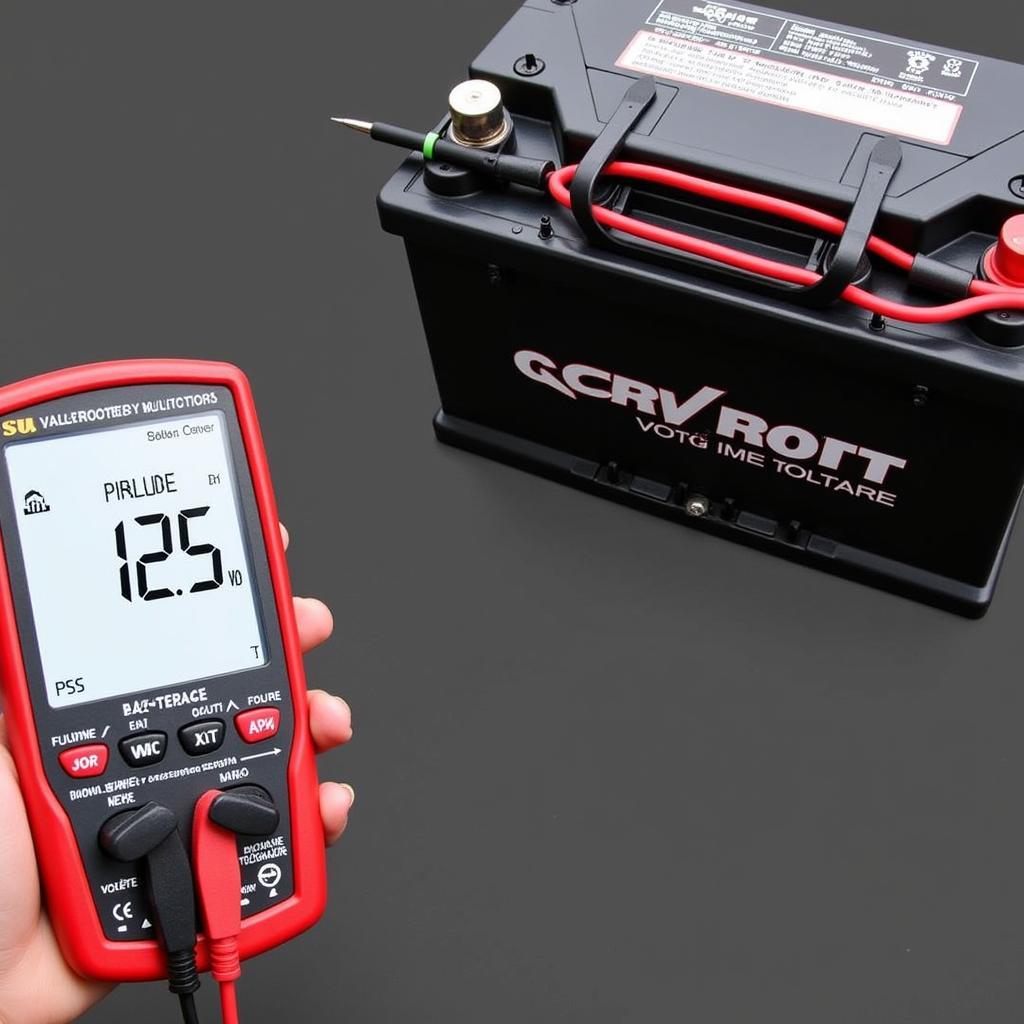A dead battery or a faulty alternator can leave you stranded. Understanding how to diagnose a “battery or alternator fault” is crucial for any driver. This guide provides a comprehensive approach to troubleshooting these common car problems, empowering you to get back on the road quickly.
Identifying a Battery or Alternator Problem
Several symptoms indicate a potential battery or alternator issue. Dim or flickering headlights are a classic sign. Slow engine cranking or a clicking sound when turning the key can also point to a battery problem. If your car stalls while driving or the battery warning light illuminates on your dashboard, it’s time to investigate further. Other signs include issues with electronic accessories like the radio or power windows, and a burning smell from under the hood, though this could indicate other problems too.
Is it the Battery or the Alternator?
Pinpointing the source of the problem is essential for effective repair. A simple test involves jump-starting your car. If the engine starts but dies shortly after removing the jumper cables, the alternator is the likely culprit, unable to recharge the battery. If the car doesn’t start at all or starts but exhibits the same symptoms, the battery is probably the issue.
Testing Your Car’s Battery
Testing the battery involves more than just checking the voltage. A multimeter can measure the battery’s voltage, but a load test provides a more accurate assessment of its capacity to hold a charge under stress. Most auto parts stores offer free battery testing services. A faulty battery may have corroded terminals, which can impede current flow. Cleaning the terminals with a wire brush and baking soda solution can often resolve minor battery issues.
Understanding Battery Voltage Readings
A fully charged car battery should read around 12.6 volts. A reading below 12.2 volts suggests a problem. Readings between 12.4 and 12.2 volts suggest a partial discharge. If the battery voltage drops significantly while the engine is running, the alternator is likely not charging correctly.
 Testing Car Battery Voltage with a Multimeter
Testing Car Battery Voltage with a Multimeter
Checking the Alternator
The alternator recharges the battery and powers the car’s electrical system while the engine is running. A failing alternator can cause various electrical problems. A simple test involves starting the car and checking the battery voltage with the engine running. The voltage should increase to around 13.5-14.5 volts. A lower reading suggests a problem with the alternator.
Signs of a Failing Alternator
Besides low voltage readings, other signs of a failing alternator include dimming headlights, whining noises from the alternator, and a burning smell. A visual inspection can also reveal worn-out brushes or a damaged belt.
“Regularly checking your battery and alternator can prevent unexpected breakdowns,” says John Smith, Senior Automotive Electrical Technician at Smith Automotive Solutions. “It’s a simple check that can save you a lot of hassle in the long run.”
What to Do if You Have a Battery or Alternator Fault
If you suspect a battery or alternator problem, get it checked immediately. Driving with a faulty alternator can damage other electrical components. If the battery is the issue, replacing it is usually a straightforward process. Alternator replacement is more complex and often requires professional service.
“Don’t ignore warning signs like dimming lights or slow engine cranking,” advises Jane Doe, Lead Diagnostic Technician at Doe Auto Repair. “Addressing these issues early can save you from costly repairs down the line.”
Conclusion
Addressing a “battery or alternator fault” requires understanding the symptoms and performing simple tests. Regular maintenance and prompt attention to warning signs can prevent major electrical problems and keep your car running smoothly. Don’t hesitate to seek professional help if you’re unsure about diagnosing or fixing the issue yourself.
FAQ
-
How often should I check my car battery? Ideally, every six months, especially before long trips or during extreme weather conditions.
-
Can a bad alternator damage my battery? Yes, a failing alternator can overcharge or undercharge the battery, leading to premature failure.
-
How long does a car alternator last? Typically, between 7 and 10 years, depending on usage and driving conditions.
-
Can I drive with a bad alternator? You can drive for a short distance, but it’s not recommended. A failing alternator can drain your battery and leave you stranded.
-
How much does it cost to replace a car battery or alternator? Battery replacement typically costs between $100 and $300, while alternator replacement can range from $300 to $800, depending on the make and model of your car.
-
What are the signs of a bad voltage regulator? Dimming or flickering headlights, problems with electronic accessories, and overcharging or undercharging the battery are signs of a bad voltage regulator, which is a component of the alternator.
-
How can I prevent battery and alternator problems? Regular maintenance, including battery and alternator checks, is crucial. Avoid leaving electronic accessories on when the engine is off, and ensure the alternator belt is in good condition.


